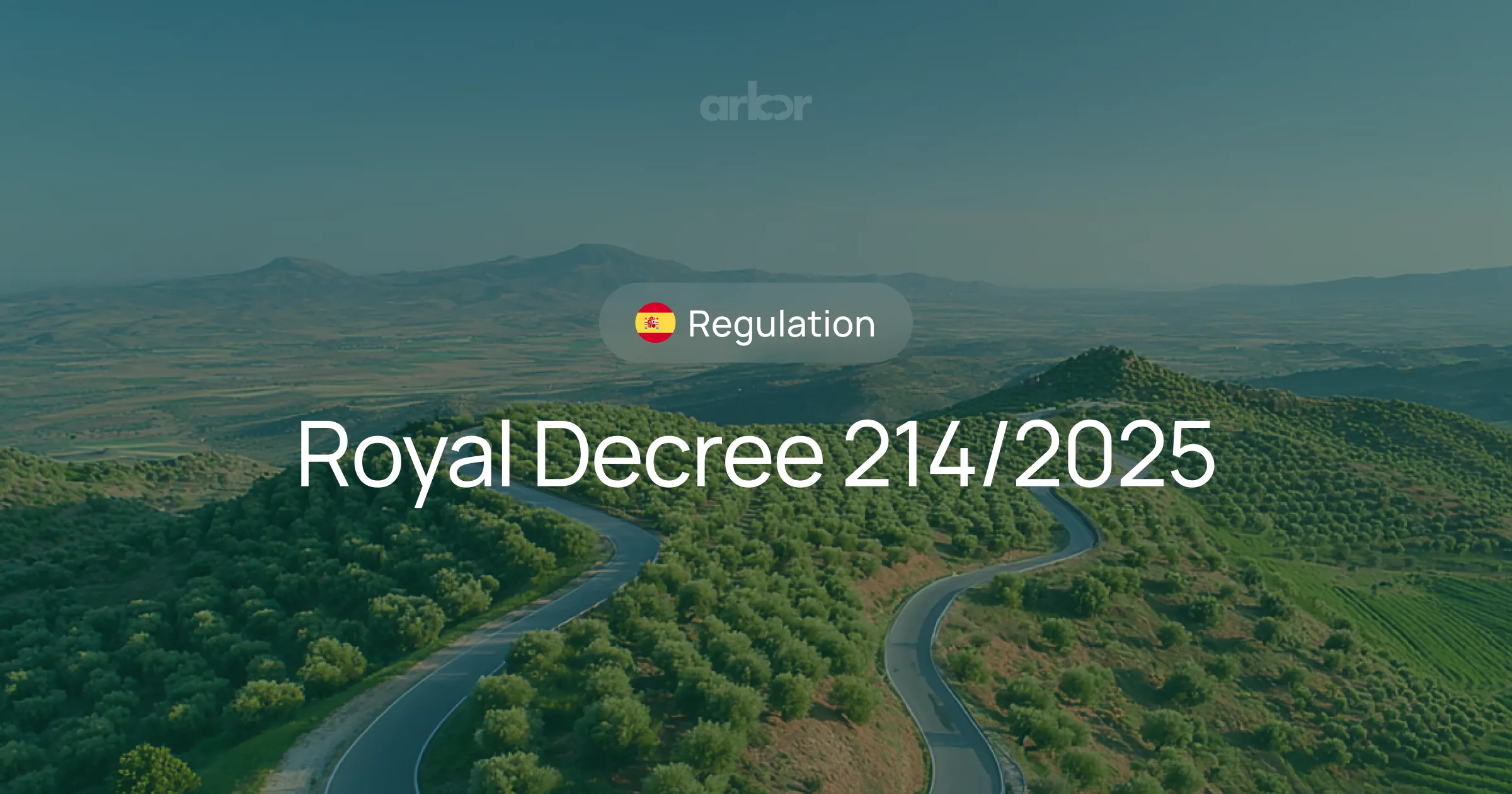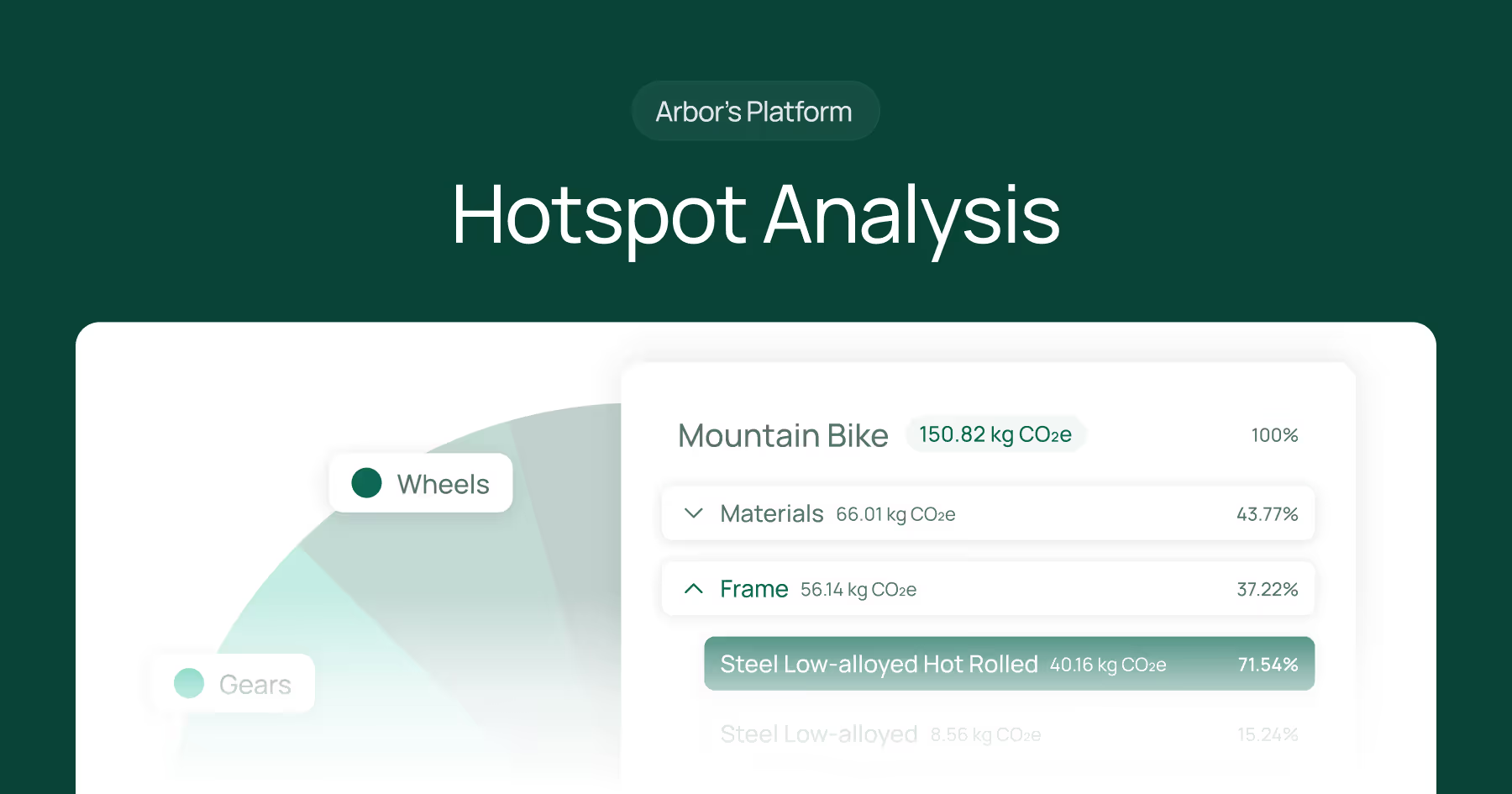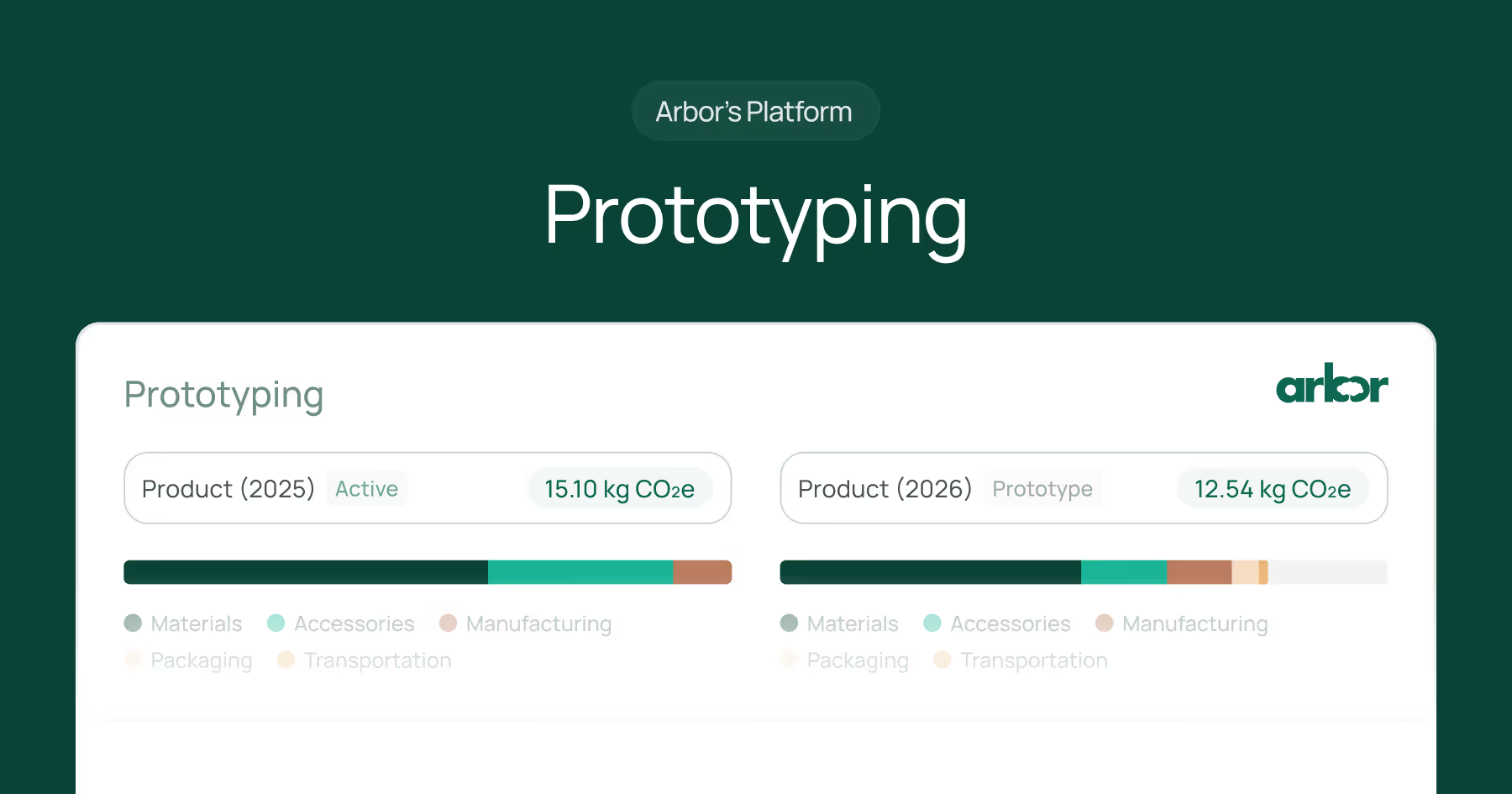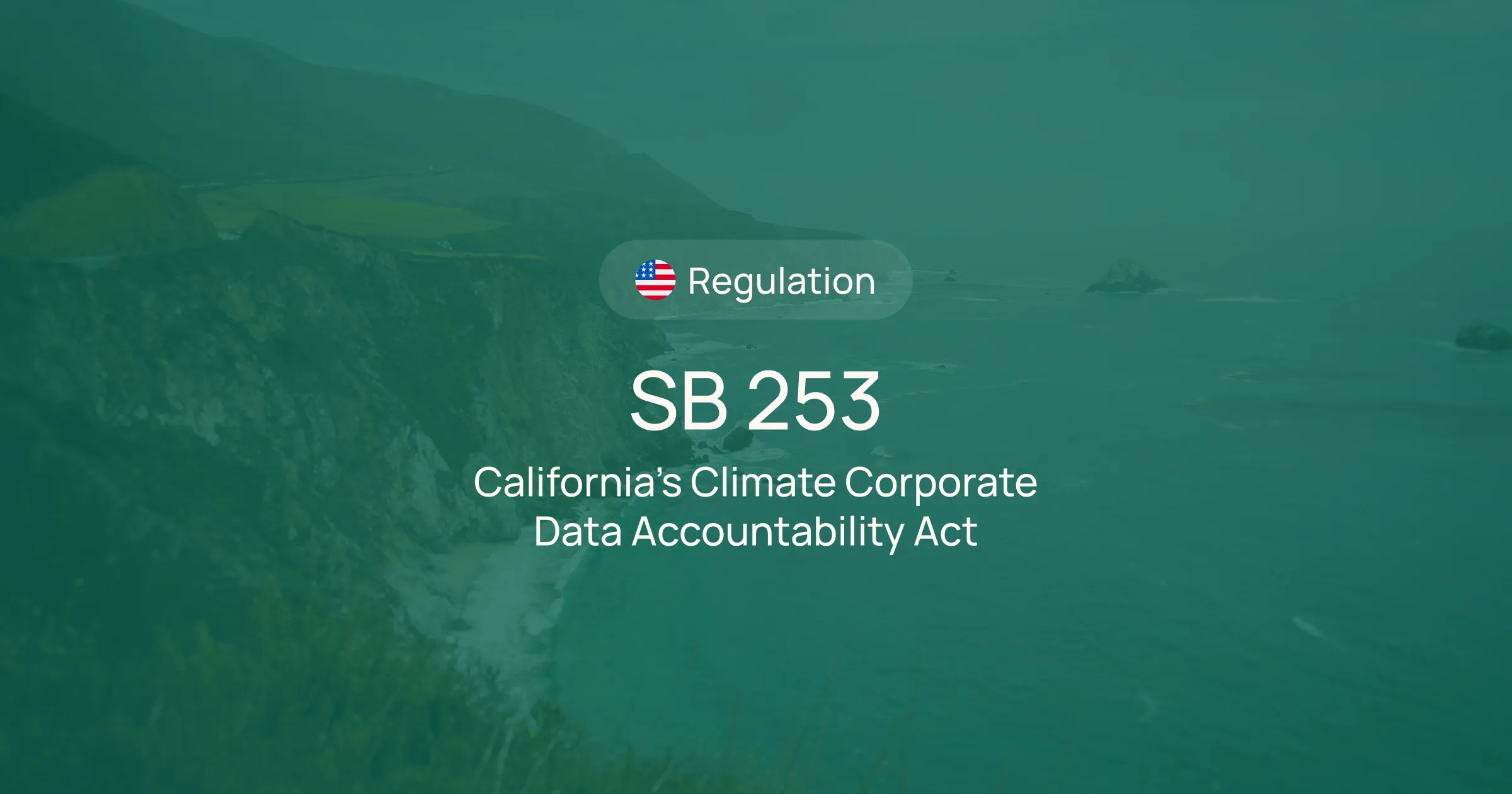Understanding a product's full environmental impact over its lifetime is essential to quantifying its environmental impact. This is where the cradle-to-grave approach to carbon calculations comes into play. It comprehensively assesses a product's lifecycle from raw material extraction to the ultimate disposal.

What does Cradle-to-Grave mean?
A product's journey in our economy typically follows a linear path: from production to disposal. The term "cradle-to-grave" encapsulates this process, offering a framework for assessing a product's environmental footprint over its entire life cycle.
To illustrate, consider a product's lifecycle akin to a human life span – from the "cradle," or beginning, to the "grave," or end. Just as a person's life involves various stages, each with different needs and impacts, a product's life cycle encompasses distinct phases, from its creation from raw materials (birth) to its eventual disposal (demise). In this analogy, cradle-to-grave depicts the product's 'biography,' highlighting that each chapter has environmental implications that collectively define the overall footprint.
Cradle-to-Grave in Life Cycle Assessment (LCA)
Within Life Cycle Assessment, cradle-to-grave measures a product's total greenhouse gas emissions from conception to final disposal. This approach is integral to comprehensively understanding a product's environmental impact.
Adopting a cradle-to-grave perspective is crucial for companies aiming to reduce their carbon footprint and maintain compliance with environmental regulations. It exposes the lifecycle stages with the highest environmental impacts, guiding effective sustainability strategies.
The Stages of a Cradle-to-Grave Analysis
A thorough understanding of each stage in the cradle-to-grave lifecycle is essential for companies to manage and minimize their environmental impact effectively. Here, we'll dive into the intricacies and nuances of these stages and consider how companies can implement sustainable practices throughout the product lifecycle.

1. Raw Material Extraction (Cradle)
A product's lifecycle journey commences with raw material extraction, the phase where natural resources are harvested for production. This stage is fraught with significant environmental challenges, including habitat destruction, soil erosion, water contamination, and biodiversity loss.
Ways to reduce carbon at the raw material extraction stage:
Companies can reduce the adverse impacts in this initial phase by adopting sustainable extraction methods and selecting renewable materials. For instance, responsible sourcing and certifications (e.g., FSC for timber) ensure that materials come from environmentally managed sources.
2. Manufacturing & Processing
Following extraction, the raw materials enter the manufacturing and processing phase. This stage is a hotspot for greenhouse gas emissions due to the heavy reliance on fossil fuels for energy and the intensive processes required to convert raw materials into finished products.
Ways to reduce carbon at the manufacturing & processing stage:
Integration of energy-efficient technologies and a transition to renewable energy sources are vital. Lean manufacturing principles can be used to minimize waste, and closed-loop systems can preserve resources. Additionally, companies can explore Life Cycle Assessment tools offered by Arbor to identify and address carbon-intensive processes.
3. Transportation
Transporting materials and goods is a quietly pervasive contributor to a product's carbon footprint. Emissions from shipping, trucking, and aviation can accumulate significantly over a product's journey from the manufacturer to the end user.
Ways to reduce carbon at the transportation stage:
Companies can optimize logistics by consolidating shipments, choosing transportation methods with lower emissions profiles, and engaging in supply chain management practices that prioritize sustainability, such as local sourcing or utilizing electric vehicle fleets.
4. Product Use
The impact during the product use phase is often overlooked, yet it plays a pivotal role in the total environmental footprint. Factors such as energy consumption for electronic devices or vehicle fuel usage directly correspond to emissions during the use phase.
Ways to reduce carbon at the product use stage:
Products designed for energy efficiency, durability, and reparability can dramatically reduce lifetime emissions. By offering services and upgrades that extend product lifespan, companies can create sustainable value and foster long-term customer relationships while mitigating environmental impacts.
5. End-of-Life (Grave)
The final stage of a product's lifecycle is where the 'grave' metaphor becomes particularly poignant. Traditional disposal methods like landfilling and incineration are significant sources of pollution and resource loss.
Ways to reduce carbon at the end-of-life stage:
Embracing a circular economy perspective, companies can design products for end-of-life recovery, facilitating recycling and repurposing materials. Investing in Take-Back programs and partnering with recycling facilities can ensure materials get a second life, thus significantly reducing the cradle-to-grave impact.
Conducting a Cradle-to-Grave Calculation
Collecting data
For a cradle-to-grave analysis, the data required is extensive and varied, reflecting the multiple stages of a product's lifecycle:
- Raw Material Extraction: Data on resource extraction rates, energy use, and emissions.
- Manufacturing & Processing: Information on energy consumption, waste generation, and process efficiencies.
- Transportation: Vehicle type, fuel usage, distance travelled, and load efficiency data.
- Product Use: Energy consumption during product use or service, maintenance requirements, and lifespan estimates.
- End-of-Life: Disposal methods, recycling rates, and associated emissions or pollution data.
Measuring emissions
Accurate data collection is imperative to perform reliable cradle-to-grave Lifecycle Assessments (LCA) in alignment with the EU's standards. Here's how to approach this task:
Manual carbon measurement
- Use the Environmental Footprint (EF) 3.1 framework to calculate emissions.
- Document every aspect of product development, from raw materials to disposal.
- Adhere to the EU's guidelines and protocols for emissions monitoring across the supply chain.
Not everyone has the capacity or expertise to handle these calculations manually. This is why specialized tools and software are essential for any company that is serious about sustainability.
Automated carbon measurement
Arbor simplifies the complex process of emissions calculations:
- Talk to our team at Arbor.
- Let our experts guide you through automated data ingestion and secondary data supplementation to fill your data gaps.
- Get your cradle-to-grave carbon emissions in a matter of minutes, not months.
Common Challenges and Solutions
Addressing the common challenges in sustainability can transform inefficiencies into opportunities for improvement and innovation. Here's how companies can overcome obstacles in data availability, quality, and the complexity of analyses:
Data Availability and Quality
One of the most significant challenges companies face is obtaining accurate and comprehensive data for sustainability assessments. Without reliable data, the integrity of cradle-to-grave analyses can be compromised.
- Establishing Partnerships: Work with suppliers and third parties to ensure data transparency and accuracy.
- Utilizing Technology: Implement IoT devices and sensors for real-time data collection.
- Leveraging External Databases: Access industry-wide databases for supplemental data that can fill in gaps.
Complexity in Analysis
The cradle-to-grave approach often involves intricate data and complex calculations. Reducing this complexity is crucial for companies to manage their environmental footprint assessments efficiently.
- Adoption of Specialized Software: Use dedicated LCA software such as Arbor’s platform that helps to simplify the collection, calculation, and analysis of data.
- Expert Consultation: Seek guidance from sustainability experts who can navigate the nuances of LCA methodologies and offer tailored solutions.
- Modular Breakdown: Tackle the lifecycle analysis into smaller sections for a more manageable approach.
Summary
The cradle-to-grave approach is a comprehensive method used in carbon calculations to assess a product's entire lifecycle—from raw material extraction to disposal. It identifies the stages where a product has the highest environmental impact, offering insight into reduction strategies and regulatory compliance.
The evaluation covers five main stages: raw material extraction, manufacturing and processing, transportation, product use, and end-of-life. Partnerships, technology, and specialized software like Arbor's LCA tools can address challenges such as data quality and complex analyses. Arbor simplifies the emissions calculation, offering automated data ingestion and secondary data supplementation. This full lifecycle assessment is paramount for companies committed to sustainability and reducing their carbon footprint.
In contrast to cradle-to-gate, which focuses only up to the product's shipment, and cradle-to-cradle, which includes recycling and reuse, the cradle-to-grave model offers a linear lifecycle perspective. It captures the total environmental footprint, underscoring a company's responsibility for its products until the end, aligning with the emerging cradle-to-grave mentality in corporate sustainability.
Arbor's carbon accounting software stands out as an effective solution for facilitating these calculations, conforming to industry standards, and helping companies efficiently navigate the complexities of lifecycle assessments.
Ready to calculate your company's carbon impact?
Talk to Arbor's carbon experts to see how we can help you conduct accurate and comprehensive cradle-to-grave assessments.
Measure your carbon emissions with Arbor
Simple, easy carbon accounting.

FAQ about Cradle-to-Grave Carbon Calculations
What is the meaning of cradle to grave?
Cradle-to-grave is a term that describes the entire lifespan of a product or service, from the extraction of raw materials (cradle) to the final disposal or recycling (grave). It encompasses all environmental impacts, including material sourcing, production, use, and end-of-life management.
What is the cradle-to-grave approach?
The cradle-to-grave approach evaluates a product or service's full lifecycle impact. It's a comprehensive framework used within Life Cycle Assessment (LCA) to measure and reduce the environmental burden at each stage of a product's life.
What is cradle-to-grave responsibility?
Cradle-to-grave responsibility refers to the ethical and often legal obligation of companies to manage the environmental impacts of their products throughout their lifecycle, including responsible waste disposal and recycling at the end of their usable life.
What are the 5 steps of cradle-to-grave?
The five primary steps of cradle-to-grave include:
- Raw Material Extraction
- Manufacturing & Processing
- Transportation
- Product Use
- End-of-Life
What is the cradle-to-grave mentality?
The cradle-to-grave mentality acknowledges that companies are responsible not only for the creation and performance of their products but also for their eventual impact on the environment once they are no longer in use—effectively, from the product's "birth" to its "death."
What is the difference between cradle-to-grave, cradle-to-gate and cradle-to-cradle?
Cradle-to-grave encompasses a product's entire lifecycle, cradle-to-gate stops at the point of shipment from the manufacturer, excluding use and disposal, and cradle-to-cradle extends the concept to include recycling and reuse, forming a closed-loop system.
What’s the best tool for calculating cradle-to-grave?
The best tool for calculating cradle-to-grave varies with company needs. However, purpose-built LCA software like Arbor offers a robust, user-friendly platform that simplifies the process with accurate, real-time data collection and analysis while aligning with the latest sustainability standards.
What is the cradle-to-grave life cycle in construction?
The cradle-to-grave lifecycle in construction refers to the complete lifespan of building materials from raw material extraction to the end of life and potential reuse or recycling. It's a concept that's been carefully standardized in the European Union under standards EN 15804+A1 and EN 15978 to ensure that all stages are accounted for when assessing the environmental impact of buildings.
Here's a breakdown of the stages:
- Modules A1 to A3 (Product Stage): These modules encompass the extraction and processing of raw materials, the transport to the manufacturer, and the actual manufacturing. This stage can be declared as one aggregated module.
- Modules A4 to A5 (Construction Process Stage): This stage involves transporting materials to the construction site and installing them in the building, including managing construction waste.
- Modules B1 to B7 (Use Stage): These stages cover the entire lifetime of the building, including maintenance, repair, replacement, refurbishment, and operational energy and water use.
- Modules C1 to C4 (End-of-Life Stage): These concern the deconstruction or demolition, waste transport, processing for reuse, recovery/recycling, and disposal.
- Module D (Beyond Life Cycle): An optional module that accommodates the cradle-to-cradle approach by assessing the potential for reuse, recovery, and recycling beyond the traditional end-of-life phase.




.webp)











%20Arbor.avif)





%20Arbor.avif)


.avif)






%20Arbor%20Canada.avif)

.avif)
%20Arbor.avif)
.avif)






_.avif)
.avif)
%20Arbor.avif)




%20Software%20and%20Tools.avif)





.avif)
.avif)




%20EU%20Regulation.avif)











.avif)


%20Arbor.avif)









_%20_%20Carbon%20101.avif)







.avif)

.avif)
.avif)



.avif)








